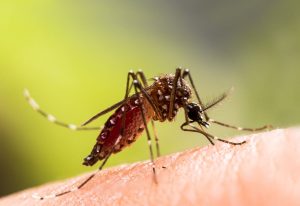THEY SAY that laughter is the best medicine; that laughter is the cure for grief.
And on the worst of days, when everything that could possibly get in your way and keep you down, somehow does, and you can’t wait to order some carb-loaded Thai food delivered straight to your doorstep, snuggle into the womb of your blankets and flip on Jimmy Fallon’s rap battles for a solid, tummy-aching crackup, because who can resist that impish charm, hold that thought. And save yourself the binge hangover.
Comedy comes in many flavors: goofball (“30 Rock”), self-deprecation (“Louie”), awkward deadpans (“The Office). And we often think of comedy as an art form purely for TV, thanks to a factory of stand-up sires such as Bill Burr and Louis C.K.
But the lesser-known child of the genre, humorous literature, is a favorite of mine. And one of my favorite essays happens to be about breasts.
You may know it already: Nora Ephron’s “A Few Words About Breasts,” a book in which the writer used her funny wits to illustrate the world’s ironies in hilariously clever accounts about women’s issues. It’s the first essay in an anthology of Ephron’s writing: “Crazy Salad, Some Things About Women.”
When I first read “A Few Words About Breasts,” I couldn’t believe someone had the nerve to write about such an intimate issue. I had never before read such a profound and yet funny explanation of breasts and their connection to a woman’s identity. But there was Ephron, chugging forward into tit territory. She longed to be a girl, she wrote, and nothing would do that for her except breasts. Only problem was, she didn’t have any, at least not for a long time during her childhood.
“That was the killer. Necking I could deal with. Intercourse I could deal with. But it had never crossed my mind that a man was going to touch my breasts, that breasts had something to do with all that, petting, my God, they never mentioned petting in my little sex manual about the fertilization of the ovum.”
Ephron describes her jealousy of her best friend when she grows breasts, capturing the agony of comparison in simple, short phrases:
“My jaw drops, and suddenly I am crying, crying hysterically, can’t catch my breath sobbing. My best friend has betrayed me. She has gone ahead without me and done it. She has shaped up.”
We don’t give witty literature enough credit. Along the way, while we’re huffing and puffing with laughter, we get a sense of a larger message. Ephron pokes fun at the awkwardness of growing up looking like a boy because she didn’t have big breasts, but she also highlights the obsession that we as a society have with women’s bodies and the reduction of a woman’s value to two mounds on her chest. That was the 1970s. It can be argued that not much has changed.
Ephron boldly talks shop on a range of other women’s issues, from the industry of feminine-hygiene sprays (“Dealing with the, uh, Problem”) to the cutthroat media industry and the way women attain top positions (“A Star is Born”). And she doesn’t shy away from writing about crazy ladies. There’s a “Crazy Ladies: I” and a “Crazy Ladies: II,” both of which, are not about “crazy” in the sense of mental illness, but in the jarring fashion of two women who stepped into the spotlight with a provocative idea of what womanhood, what being a true woman, really is. In her essays of criticism, Ephron isn’t afraid to be frank, to shut it down when needed.
This is how she describes a certain Martha Mitchell, the wife of a presidential campaign manager who had earned a “crazy lady” reputation in Washington, D.C.:
“But Martha Mitchell is neither busy nor crazy nor happy. There is not much call for yesterday’s celebrities. There is probably a lesson in all this, something about crazy ladies, or crying wolf, or maybe something about Richard Nixon – but I don’t know what it is. To some extent Martha Mitchell got what she deserved…”
Say it like it is, sister.


-300x200.jpeg)









-300x241.jpeg)




